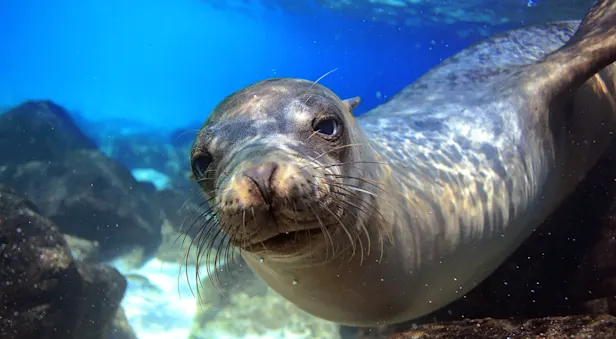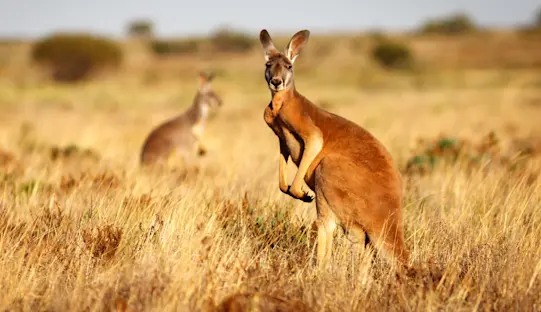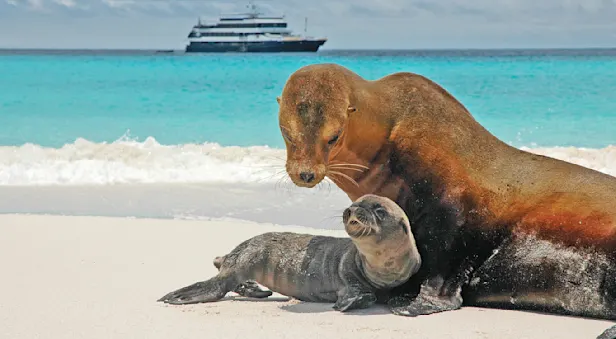
Know Before You Go


Galapagos Penguin Facts | Galapagos Wildlife Guide
This flightless bird is one of five endemic seabirds in the islands. Though clumsy on land, they are extremely skilled and swift under water, which becomes apparent when snorkeling with them. This is the best way to appreciate penguins’ agility; it is a lot of fun, but do not even try to keep up, as penguins are amazingly fast under water!
Physical Characteristics
Up to 20 inches long
Weigh only 5.5 pounds
Coat is black on the head and back with white markings on the head, belly and underside of the flippers
Range and Habitat
Most penguins are associated with the colder regions of the Southern Hemisphere, specifically around Antarctica, but the cool Humboldt Current that flows north from Antarctica along the western coast of South American enables the Galapagos penguin—the most northerly penguin in the world—to live on islands that straddle the equator. Although they normally breed along the western part of Isabela and Fernandina islands, a small colony is often seen on Bartolomé. They occasionally show up on Floreana and James islands as well.
Behavior and Communication
Galapagos penguins undergo a molt twice per year and always prior to breeding. They also tend to bond with one partner for life. The pair will preen each other and tap bills, which reinforces their partnership. They use vocalizations and some body movements to communicate emotions and greetings. Different vocalizations and movements help them identify their partners and chicks.
Feeding Habits
Their diet consists of mostly of sardines, anchovies and mullet, and foraging usually occurs within a mile or so of the breeding area.
When Galapagos penguins molt, which they do before breeding occurs, they are unable to enter the cold water as often to feed. This, in turn, ensures that there is an ample food supply available during times of breeding. Likewise, penguins suffer from lower amounts of food during El Niño years, when surface area temperatures of the water rise.
Breeding and Reproduction
Two eggs are laid 4 days apart, and incubation lasts up to 40 days. The male and female share the duties of incubating the eggs, allowing both adults to forage for food. Females may have as many as three clutches per year. Breeding can occur year-round; two broods a year are possible under good conditions. Colonies are small and not tightly packed with nests.
Conservation
Galapagos penguins are threatened by pollution and climate change. Much of the population has died off in past El Niño events, when prey species declines (as waters warm) and breeding becomes more stress-induced and, therefore, less successful. They are also threatened by snakes, hawks, crabs and owls. And at sea they may be killed by sea lions, fur seals and sharks.
See Galapagos Penguins On These Galapagos Cruises

Galapagos Discovery: The Nat Hab Experience
Small-group adventures aboard your choice of private yachts, led by our outstanding naturalist guides and photography pros. Snorkel and swim with sea lions, sea turtles and penguins on this incomparable nature odyssey.
































